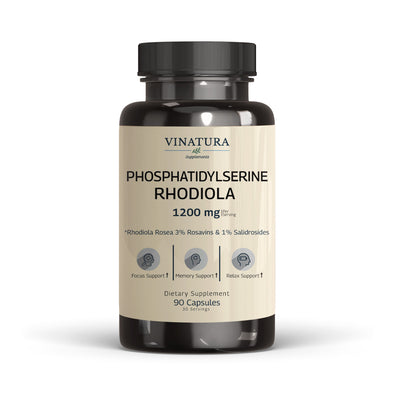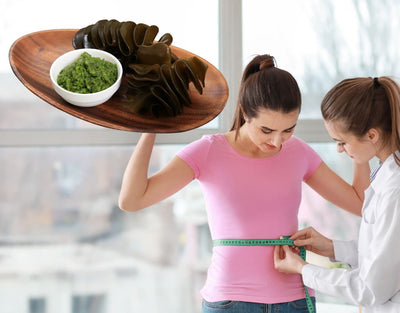
Does Creatine Upset Your Stomach? How To Stop It?
A Reddit user shared that after three days of taking 5g of creatine per day—without going through a “loading phase” and using a single daily dose—they experienced constant stomach pain and bloating, especially right after consumption. Many others noted that this is a common issue, particularly for those new to creatine*.
So why does creatine cause these symptoms? Which signs should you watch for? And more importantly, how can you keep using creatine without upsetting your stomach?
Before exploring further, please read the disclaimer located at the end of this webpage.
Key Takeaways
- Creatine can cause stomach pain in some individuals, especially when taken in high doses or all at once.
- Common symptoms: Stomach pain, diarrhea, belching, bloating, cramps.
- Causes: Poor solubility of creatine, high doses overwhelming the stomach, water being drawn into muscles reducing digestive fluids.
- Relief strategies: Stay well hydrated, split doses (3–5g/day), take with meals, start with low doses, choose pure creatine.
Does Creatine Upset Your Stomach?
Yes, creatine can cause stomach discomfort in some people, especially when taken in a high single dose.
Research shows that symptoms like stomach pain, diarrhea, and belching are common, particularly when using 10g of creatine once a day (Ostojic, S. M., & Ahmetovic, Z., 2008).
A study involving 59 professional football players found that creatine supplementation could cause digestive issues such as diarrhea (39%), stomach pain (23.8%), and belching (16.9%). Notably, taking 10g of creatine all at once led to more diarrhea compared to splitting it into two 5g doses. This suggests that creatine can be used safely if taken correctly [1].
Is creatine really the cause of digestive issues—or could incorrect usage be the real reason? To better understand this, let’s start with the basics: what exactly is creatine?

Creatine is a natural compound that supplies energy to muscles, especially during high-intensity activities such as sprinting or lifting weights. The body produces creatine in the liver, kidneys, and pancreas and also absorbs it from foods such as red meat, seafood, and dairy.
Benefits of Creatine:
- Supports strength and performance, particularly in explosive activities such as weightlifting and sprinting.
- Supports recovery after intense workouts.
- Promotes muscle mass gains when combined with proper training.
- Supports brain function in older adults, including areas such as short-term memory and reasoning ability.
- May play a role in maintaining cellular function and structural integrity related to creatine metabolism, muscle tissue, and skin appearance, based on preliminary research.
- May help lower the likelihood of injuries and cramps.
However, some users—especially beginners—may experience mild digestive side effects. These symptoms can usually be managed by adjusting dosage, usage method, and daily habits.*

Below is a detailed summary table of common digestive side effects associated with creatine monohydrate, including descriptions, primary causes, and suggested solutions:
|
Side Effect |
Description |
Primary Cause |
Mitigation Strategies |
|
Stomach pain [1] |
Mild abdominal discomfort, similar to overeating; often occurs on an empty stomach or at high doses. |
|
|
|
Bloating [1] |
Feeling of fullness or pressure in the abdomen due to creatine drawing water into muscles, reducing digestive fluids. |
|
|
|
Gas |
Increased gas production, similar to eating gas-producing foods. |
|
|
|
Diarrhea [1] |
Loose stools, rare, usually caused by high doses or dehydration. |
|
|
|
Cramps [4] |
Rare but possible due to electrolyte imbalance or dehydration. |
|
|
|
Weight gain [4] |
Common and usually harmless. |
|
|
These are mostly mild symptoms. However, in some cases, more serious issues such as electrolyte imbalance, dehydration, shortness of breath, rapid heart rate, or allergic reactions may occur [4].
Read more: Does Creatine Cause Hair Loss? User Experiences & Scientific Evidence
One user, Top_Bus9467, reported stomach pain and discomfort after starting creatine. This is fairly common at the beginning, and many users note that the body can adapt after a few days. Some recommend starting with a low dose (2.5g) and gradually increasing to 5g to avoid discomfort. Others switch to capsule or gummy forms of creatine instead of powder to reduce stomach issues.*
Additionally, the video "What Happens To Your Body After Taking Creatine For 30 Days?" by Jeremy Ethier, a YouTuber specializing in scientific nutrition training videos, with over 7 million subscribers also mentions that stomach pain is a common side effect during the loading phase. This occurs as muscles begin absorbing creatine.

To reduce discomfort, you can:
- Split creatine into smaller doses throughout the day, especially during the loading phase.
- Avoid taking it on an empty stomach or with caffeine, as both can increase stomach irritation.
- Mix creatine with warm water to ensure full dissolution, which may help reduce discomfort.
To better understand why creatine causes digestive issues, we’ll explore the underlying mechanisms in the next section.
Why Does Creatine Cause Stomach Issue?
Creatine can lead to various stomach problems such as bloating, stomach pain, cramps, and diarrhea, which are often linked to the following factors:
Poor Solubility
Creatine monohydrate has low solubility in water. When not completely dissolved, creatine particles can settle in the stomach, irritating the stomach lining and causing symptoms like discomfort, bloating, and cramps. This issue typically occurs when creatine is mixed with cold water or not stirred thoroughly. Using warm water to dissolve creatine can help alleviate these symptoms.
High Doses and Loading Phase
Taking creatine in high doses can overload the digestive system. A study showed that a single 10g dose of creatine can increase the risk of diarrhea by 56%, while taking 5g twice a day only resulted in a 29% risk [1]. High doses can alter the fluid balance in the digestive tract, leading to increased discomfort.
Dehydration
Creatine has the ability to draw water into muscle cells to enhance athletic performance, but this can reduce the water available in the digestive system, leading to symptoms like bloating, cramps, and stomach discomfort. Users are advised to drink 2-3 liters of water daily to compensate for the water loss and minimize digestive symptoms.
However, in rare and extreme cases of improper creatine use, more severe side effects can occur. For example, Patrick Lowndes, a 70-year-old user, reported severe side effects after taking an unusually large dose of creatine mixed into hot chocolate.
He experienced nausea, vomiting, dizziness, and even lost control of his bowels. He believes the incident was caused by finishing off the nearly empty creatine container without drinking enough water.*
Personal Sensitivity
Some individuals may be more sensitive to creatine or the additives in creatine products. Differences in gut microbiota may also increase sensitivity to creatine.
Pre-existing Digestive Conditions
People with digestive conditions such as irritable bowel syndrome (IBS), gastric ulcers, or inflammatory bowel disease (IBD) should exercise caution when using creatine, as some may experience unwanted reactions in the digestive system. Additionally, many creatine or protein powder supplements contain artificial sweeteners such as sucralose or xylitol, which have been reported to exacerbate digestive issues, especially in those with IBS [5].
How to Stop Stomach Pain from Creatine?

Maintain Proper Hydration
Creatine increases water retention in muscles, which can lead to temporary dehydration in the digestive system, causing bloating, cramps, or indigestion. Staying well-hydrated helps maintain fluid balance, supports digestion, and alleviates these symptoms.
How to do it:
- Drink at least 2-3 liters of water daily, especially during intense exercise.
- Increase water intake when starting creatine or during the loading phase (if applicable), as water requirements rise.
- Distribute your water intake evenly throughout the day, avoiding consuming large amounts at once to prevent pressure on the stomach.

Adjust Your Dosage and When You Take It
"When creatine is supplemented in doses of 3-5 grams or higher for several weeks, creatinine levels will increase as the excess creatine is harmlessly filtered and excreted into the urine."
- Timing, optimal dose, and intake duration of dietary supplements with evidence-based use in sports nutrition (Naderi et al., 2016).
Taking creatine at high doses (10g/serving) or on an empty stomach increases the risk of digestive discomfort due to rapid absorption and osmotic pressure in the stomach. Therefore, it is better to use moderate doses to allow the body to adapt.
Although the body can synthesize around 1–2g of creatine daily from arginine, glycine, and methionine, or absorb small amounts from beef, pork, and fish, supplementation is still possible. The typical supplement dose is 3–5g/day, with the excess converting to creatinine and being excreted through urine without harm [6].
How to do it:
- Use the recommended dose of 3–5g/day, which works for most people without needing a loading phase [6].
- The creatine loading phase lasts 5–7 days with a daily dose of 20–25 grams, compared to the maintenance dose of just 3–5 grams. If higher doses are needed, divide the dose into smaller amounts (2.5–3g, 2-3 times/day) to reduce digestive pressure.
- Avoid taking creatine on an empty stomach, especially for those with sensitive stomachs, as this increases the risk of irritation.
- Take creatine after workout or meals when the digestive system is actively working, to optimize absorption.
Take Creatine With Meals
Although creatine can be taken before or after meals, the timing of creatine intake depends on personal preference.
However, taking creatine with meals, especially those rich in carbohydrates, slows down the absorption process, reduces irritation to the stomach lining, and improves tolerance. Carbohydrates also stimulate insulin secretion, aiding the transport of creatine into muscle cells, thereby enhancing absorption efficiency.
How to do it:
- Combine creatine with meals that contain complex carbohydrates (such as oats, rice, or sweet potatoes) or post-workout protein smoothies.
- Mix creatine into liquid meals such as fruit smoothies or yogurt to increase solubility and make digestion easier.
Start With a Lower Dose and Increase Slowly
Starting with a low dose helps the digestive system gradually adjust to creatine, reducing the risk of adverse reactions like stomach pain or diarrhea. This is especially important for beginners or those with sensitive stomachs.
How to do it:
- Start with 2-3g/day in the first week, then increase to 5g/day if no digestive symptoms occur.
- Maintain a stable dose of 3-5g/day instead of a loading phase (20-25g/day), as the loading phase increases the risk of bloating and diarrhea.
- Monitor body reactions for 1-2 weeks and adjust as needed.
Ensure Sufficient Dietary Fiber
Fiber supports digestive function by promoting bowel motility, maintaining a healthy gut microbiota, and managing constipation, which can worsen discomfort when using creatine. A high-fiber diet helps keep the digestive system functioning smoothly and reduces the risk of bloating or distension.
How to do it:
- Aim for 25-35g of fiber per day from sources like leafy greens (broccoli, spinach), fruits (apples, bananas), whole grains (oats, brown rice), and legumes (lentils, black beans).
- Increase fiber intake gradually to avoid bloating due to sudden changes in your diet.
- Combine soluble fiber (from apples or oats) and insoluble fiber (from leafy greens) to optimize gut health.
Seek Guidance from a Healthcare Provider
People with a history of digestive conditions (such as IBS, ulcerative colitis, or Crohn's disease) are more prone to side effects and may need personalized guidance to ensure safety. A nutritionist or doctor can suggest appropriate dosages and usage.
How to do it:
- Consult a doctor or nutritionist before starting creatine if you have pre-existing digestive issues.
- Provide information about your health history, medications, and diet to receive accurate advice.
- Monitor symptoms in the first 1-2 weeks and report any ongoing issues to your healthcare provider.
Track Your Response and Make Changes as Needed
Tracking your body's response helps identify the specific cause of discomfort (dosage, timing, or product) and make adjustments in a timely manner to optimize tolerance.
How to do it:
- Keep a journal for the first 1-2 weeks, noting dosage, timing, food combinations, water intake, and symptoms (stomach pain, bloating, diarrhea).
- If symptoms appear, try adjusting one factor at a time (e.g., reduce the dose from 5g to 3g, or take it with meals instead of on an empty stomach).
- Temporarily stop creatine (3-5 days) if symptoms are severe (e.g., continuous diarrhea, intense stomach pain) and consult a doctor.

Choose a High-Quality Creatine Product
Low-quality creatine products may contain additives, unnecessary fillers, or contaminants that irritate the digestive system in sensitive individuals. Pure creatine monohydrate may help minimize the risk of adverse reactions.
How to do it:
- Choose creatine monohydrate from reputable brands with verified purity.
- Avoid products with flavorings or artificial sweeteners (like sucralose or aspartame), as these can cause bloating or diarrhea.
- Check the product label to ensure it doesn't contain unnecessary additives or fillers.
According to David K. Kim, creatine pills offer superior performance, enhancing energy and providing a noticeable "muscle pump" during workouts. With a maintenance dose of 5g/day after the loading phase, the product performs similarly to regular creatine, supporting optimal workout performance.*
Consider Interactions With Other Supplements
When using creatine, be aware of interactions with other substances, especially caffeine and diuretics. Caffeine may increase the risk of dehydration, leading to cramps, water retention, and stomach pain when used with creatine. If you regularly consume caffeinated beverages, consider reducing the dose and monitoring your body’s response.
Ensure adequate water intake during exercise to minimize side effects and enhance creatine absorption. Before combining creatine with any other medications or supplements, consult a doctor to avoid negative impacts on health or workout performance.
Other Creatine Side Effects
Possible side effects when using creatine include :
- Weight gain (mainly due to water retention and increased muscle mass)
- Muscle cramps
- Mild muscle strains or tears
- Stomach discomfort, pain
- Diarrhea
- Dizziness
- Increased blood pressure
- Liver dysfunction
- Kidney damage (especially with high doses or combined with nephrotoxic medications)
Rare severe cases :
- Rhabdomyolysis (muscle breakdown, which can lead to acute kidney failure) – reported in users >10g/day for 6 weeks.
- Cessation of endogenous creatine production with prolonged use (long-term effects unclear).
- Heart arrhythmia or purpuric dermatosis (a rare skin condition) – some doctors suspect a connection.
Those who should avoid creatine :
- People with kidney, liver, or high blood pressure issues
- Those taking NSAIDs, diuretics, cimetidine (Tagamet), or probenecid (gout medication)
Conclusion
Creatine can cause stomach discomfort, especially when taken in high doses or improperly. To minimize these side effects, start with a low dose, take it with food or water, and choose easily absorbed forms like creatine monohydrate. If stomach discomfort persists, consult a doctor to adjust the dosage or discontinue use.
Testimonial Disclaimer
*The testimonials presented on this website are provided by individuals based on their personal experiences with our products. These testimonials represent individual opinions and experiences, which may not be typical or applicable to all users of our products. Results may vary depending on a variety of factors, including individual health, lifestyle, and adherence to product usage instructions.References
- [1] Ostojic SM, Ahmetovic Z. Gastrointestinal Distress After Creatine Supplementation in Athletes: Are Side Effects Dose Dependent? Research in Sports Medicine. 2008;16(1):15-22. doi:https://doi.org/10.1080/15438620701693280
- [4] https://www.facebook.com/Drugscom. Creatine: Uses, Side Effects & Warnings. Drugs.com. Published 2023. Accessed May 9, 2025. https://www.drugs.com/creatine.html#side-effects
- [5] Yasinski E. IBS Is Manageable, Doctors Say - MedShadow Foundation | Independent Health & Wellness Journalism. MedShadow Foundation | Independent Health & Wellness Journalism. Published April 14, 2022. Accessed May 9, 2025. https://medshadow.org/cause-ibs/
- [6] Naderi A, Erick, Ziegenfuss TN, Willems MET. Timing, Optimal Dose and Intake Duration of Dietary Supplements with Evidence-Based Use in Sports Nutrition. Physical Activity and Nutrition. 2016;20(4):1-12. doi:https://doi.org/10.20463/jenb.2016.0031
Author

Product Disclaimer
The dietary supplement products mentioned on this website are formulated based on scientific research and adhere to FDA guidelines for dietary supplements. However, the content of the articles has not been evaluated by the Food and Drug Administration (FDA) and is not intended to promote or endorse any specific product. Any products sold on this website are not intended to diagnose, treat, cure, or prevent any disease.
Opinions and Endorsements
Any claims, statements, or opinions expressed in the articles are those of the author(s) and do not necessarily reflect the views or opinions of the manufacturers of the dietary supplement products. The products sold on this website are separate from the content of the articles and are not directly endorsed or associated with the information presented here.
Liability Disclaimer
The author(s) of the articles, website, and manufacturers of the dietary supplement products do not assume any liability for any potential consequences arising from the use of the information provided in the articles. It is recommended that individuals consult with a qualified healthcare professional before making any dietary or lifestyle changes, including the use of dietary supplements.
Product Usage
Please refer to the product labels and packaging for specific usage instructions and guidelines for the dietary supplement products sold on this website.
Customer Support
For any concerns or questions regarding the dietary supplement products, please contact our customer support team, who will be more than happy to assist you.





Leave a Comment
Be the first to comment.
What do you think?